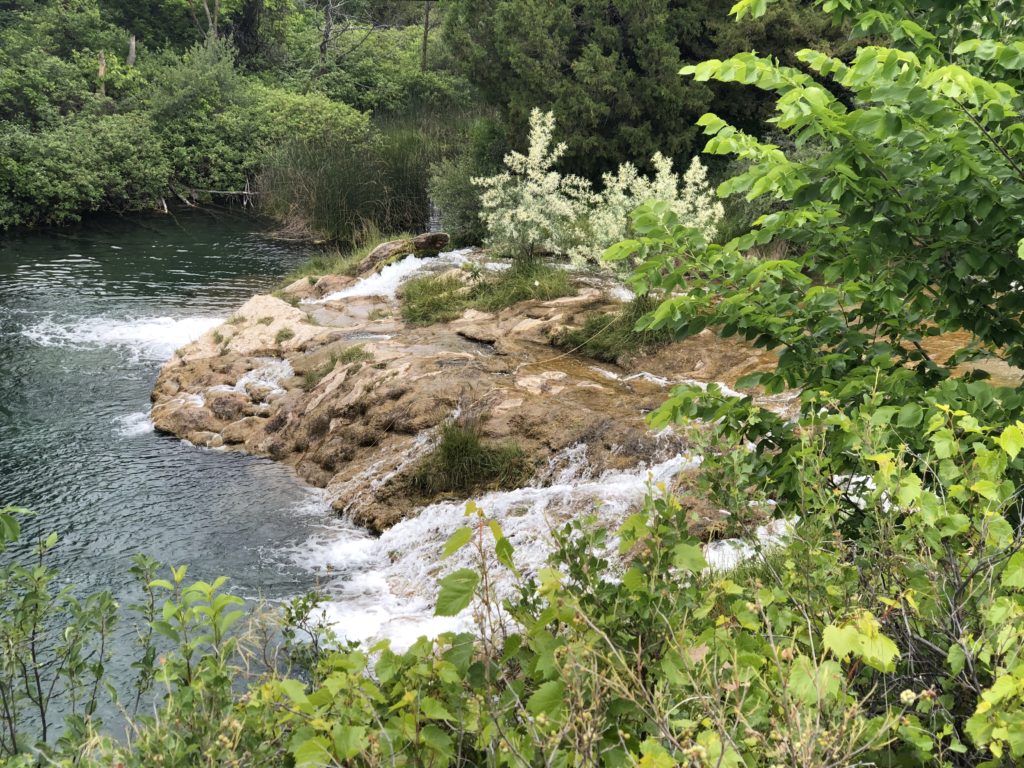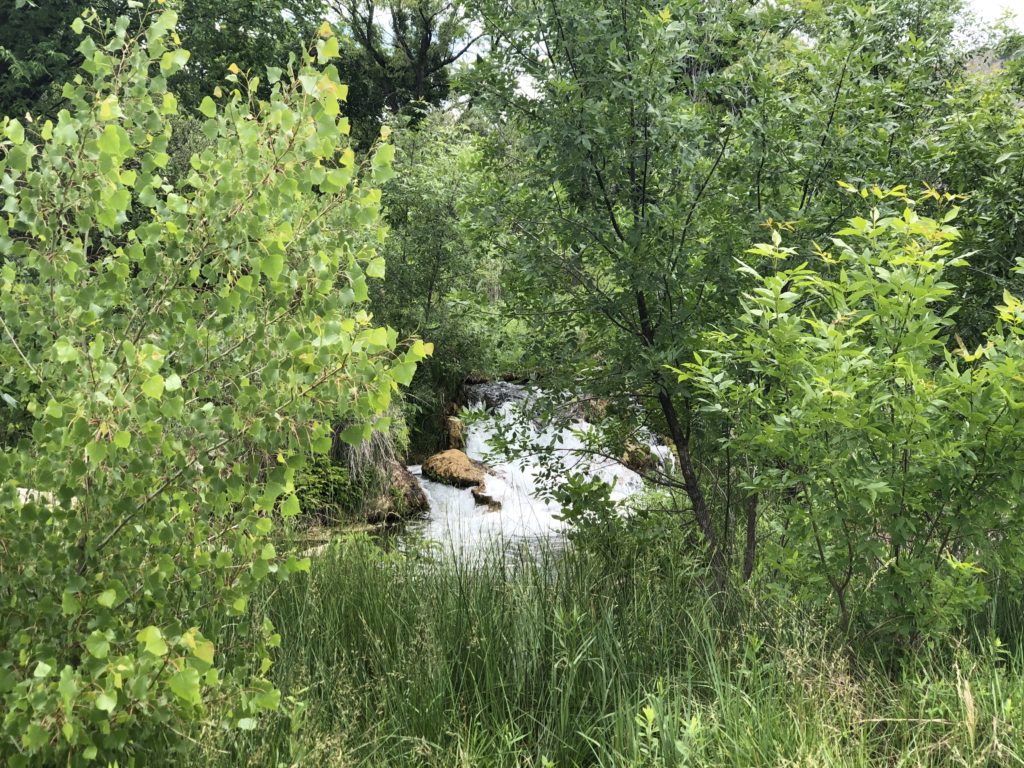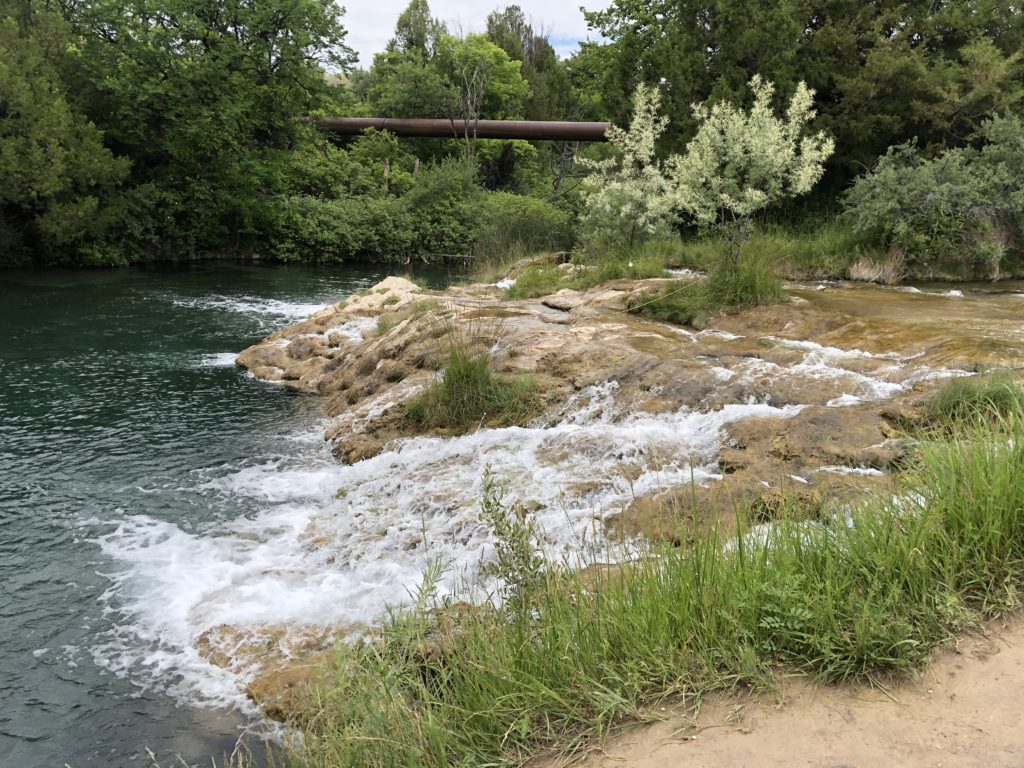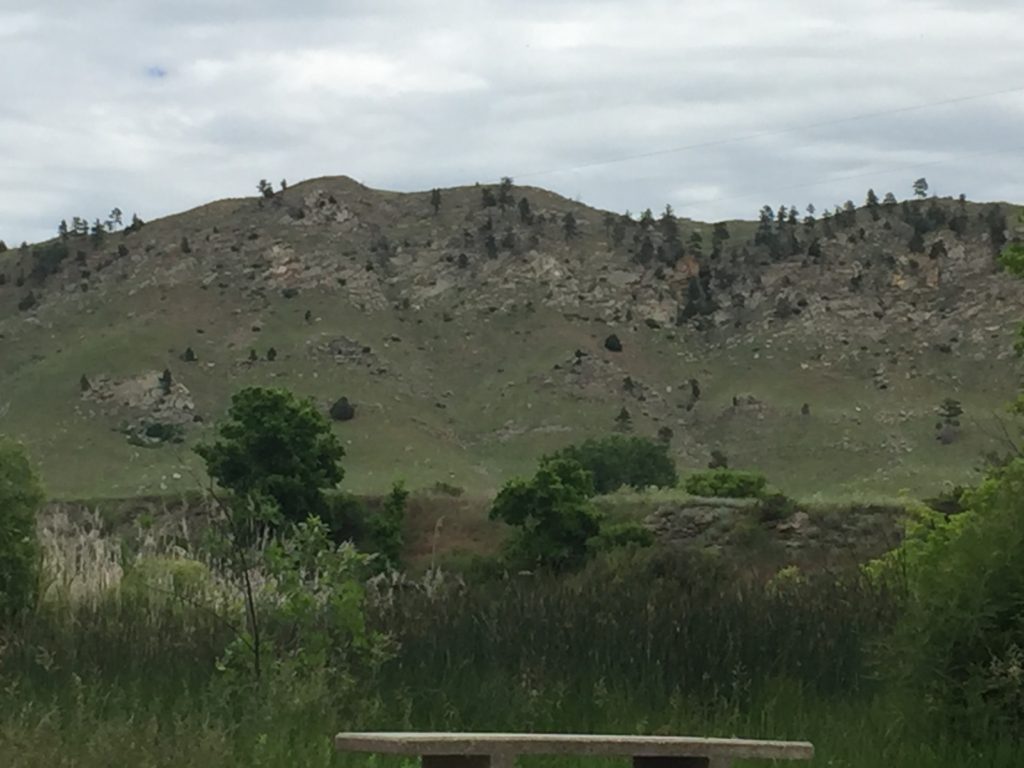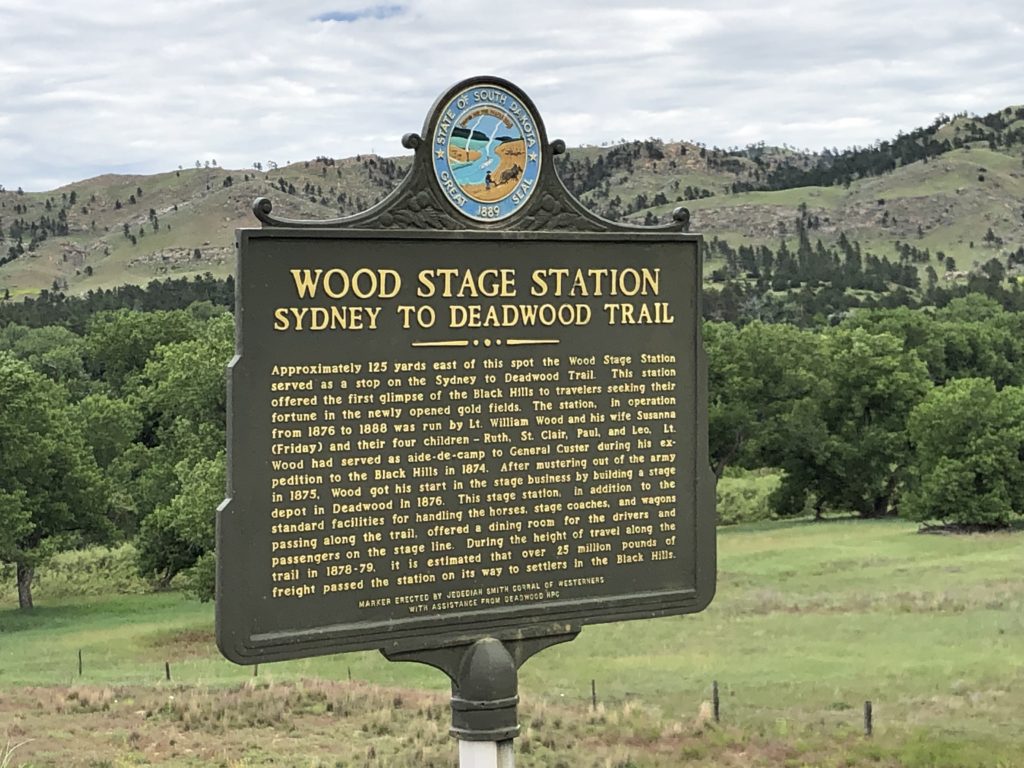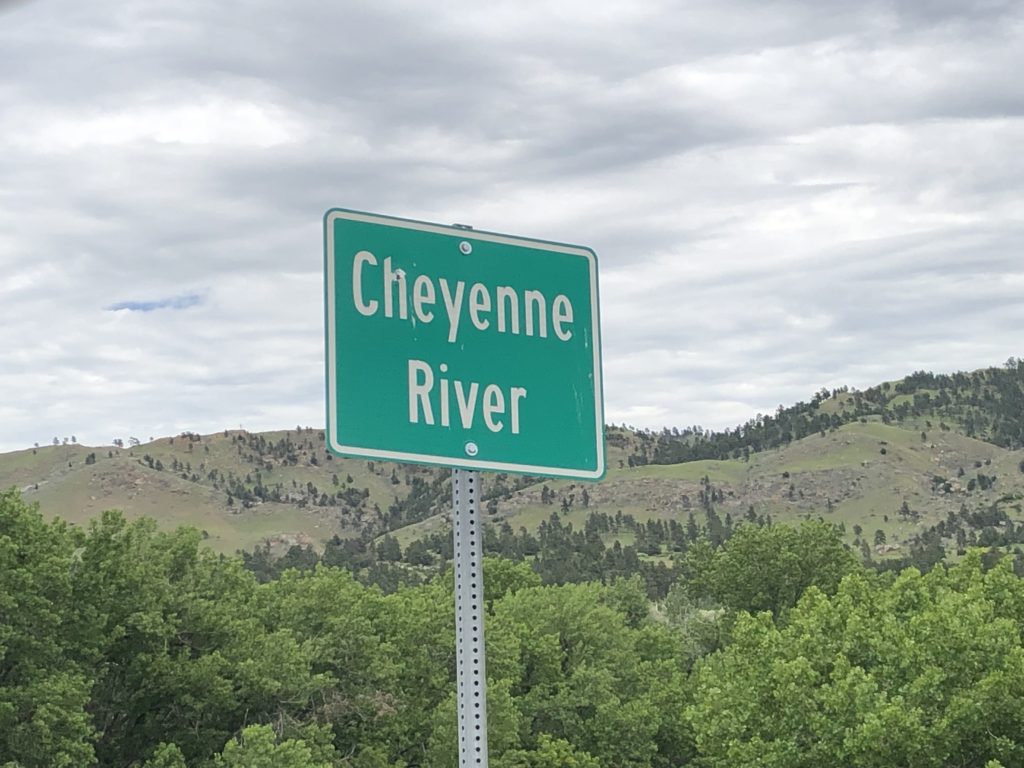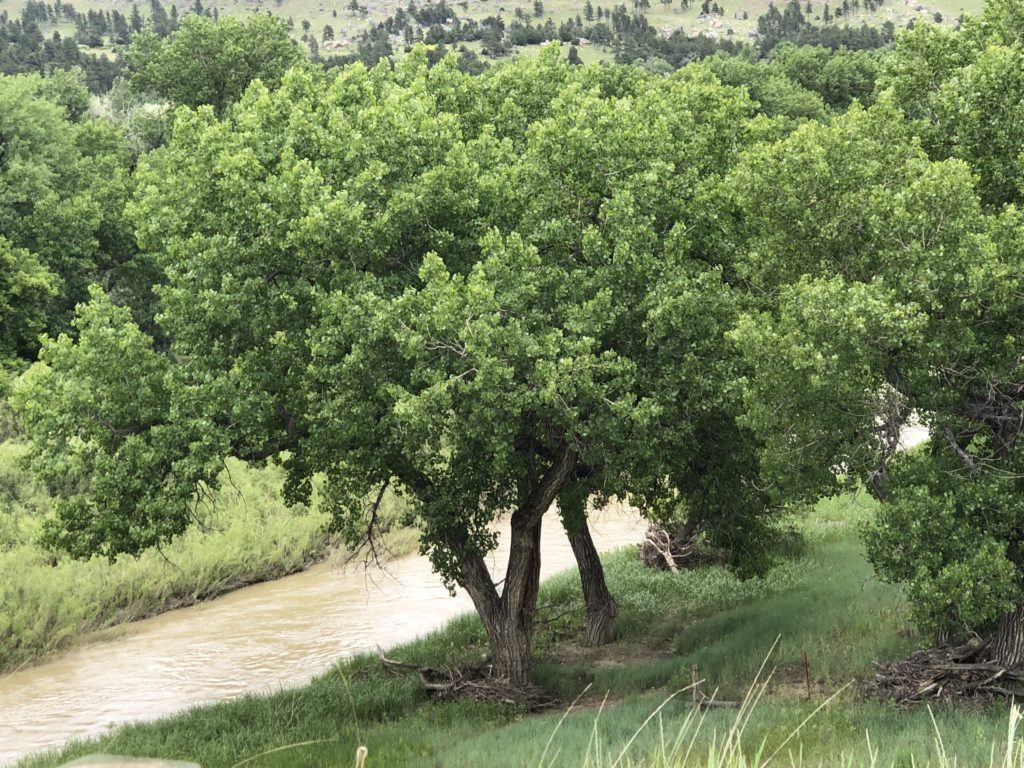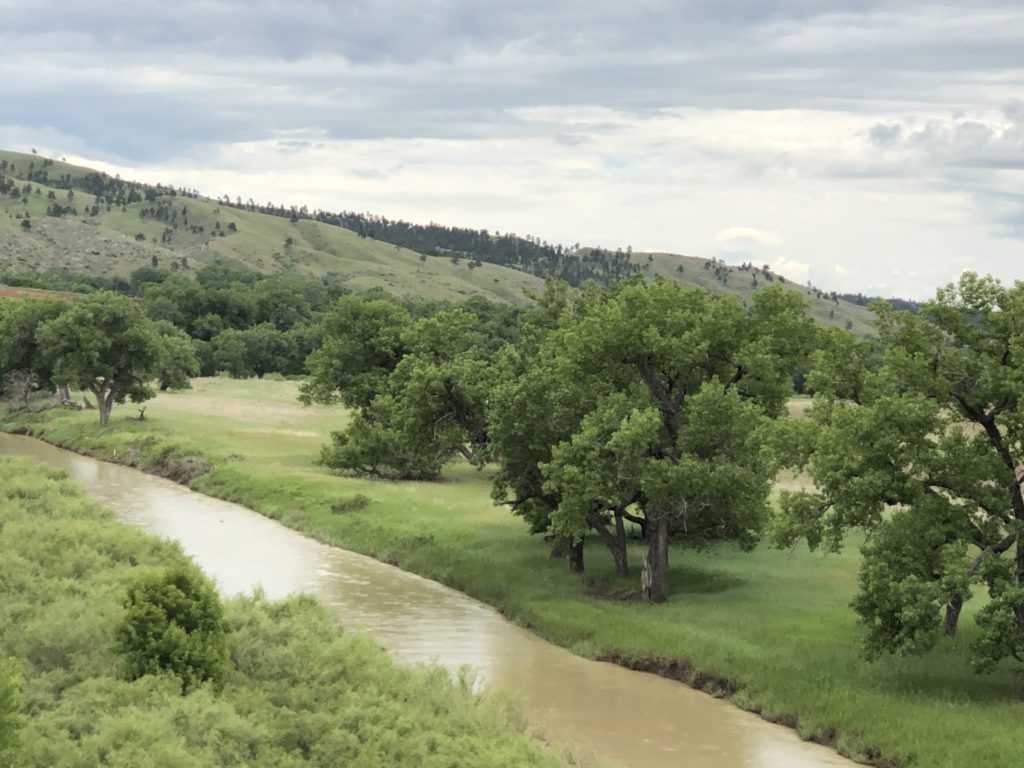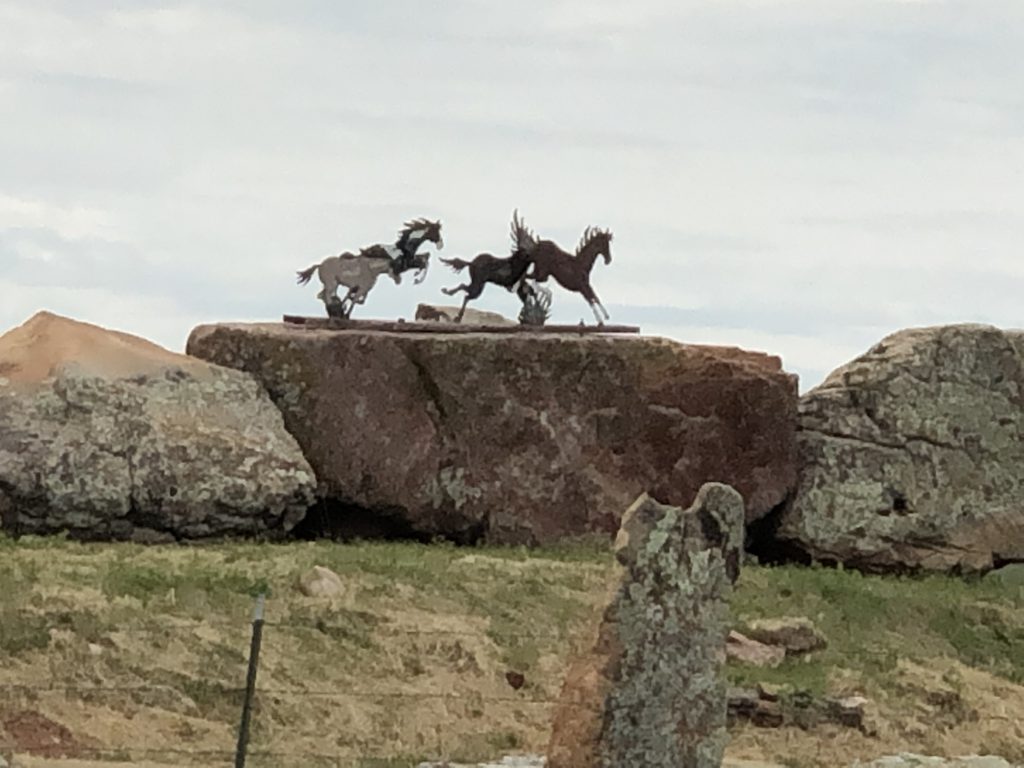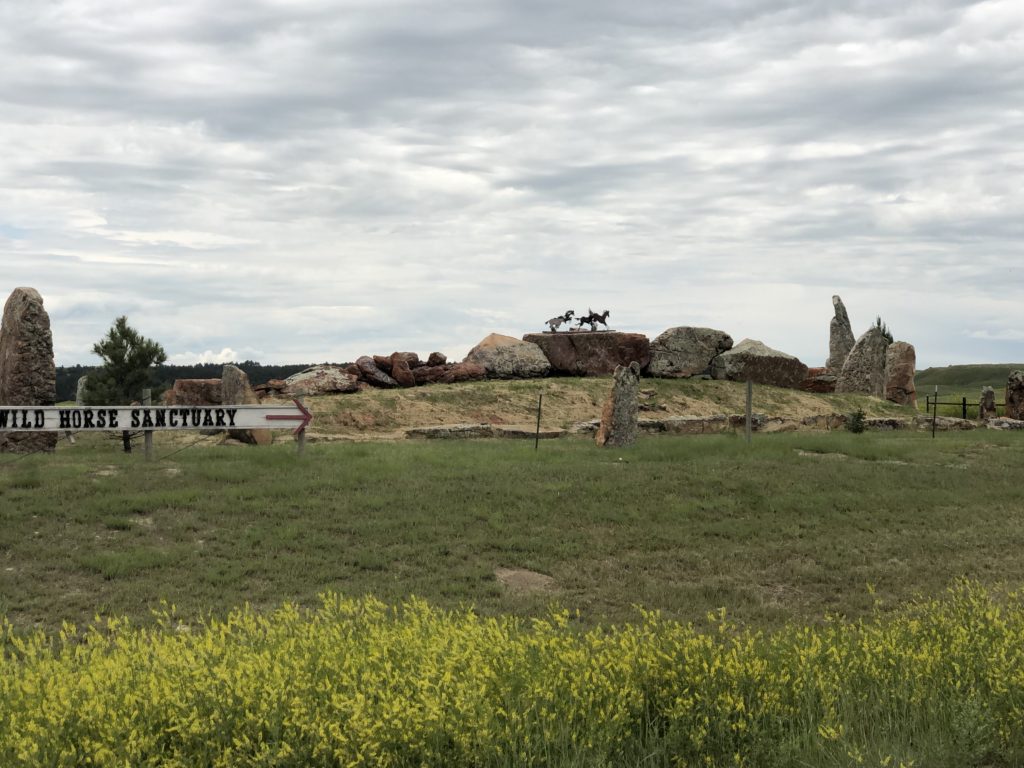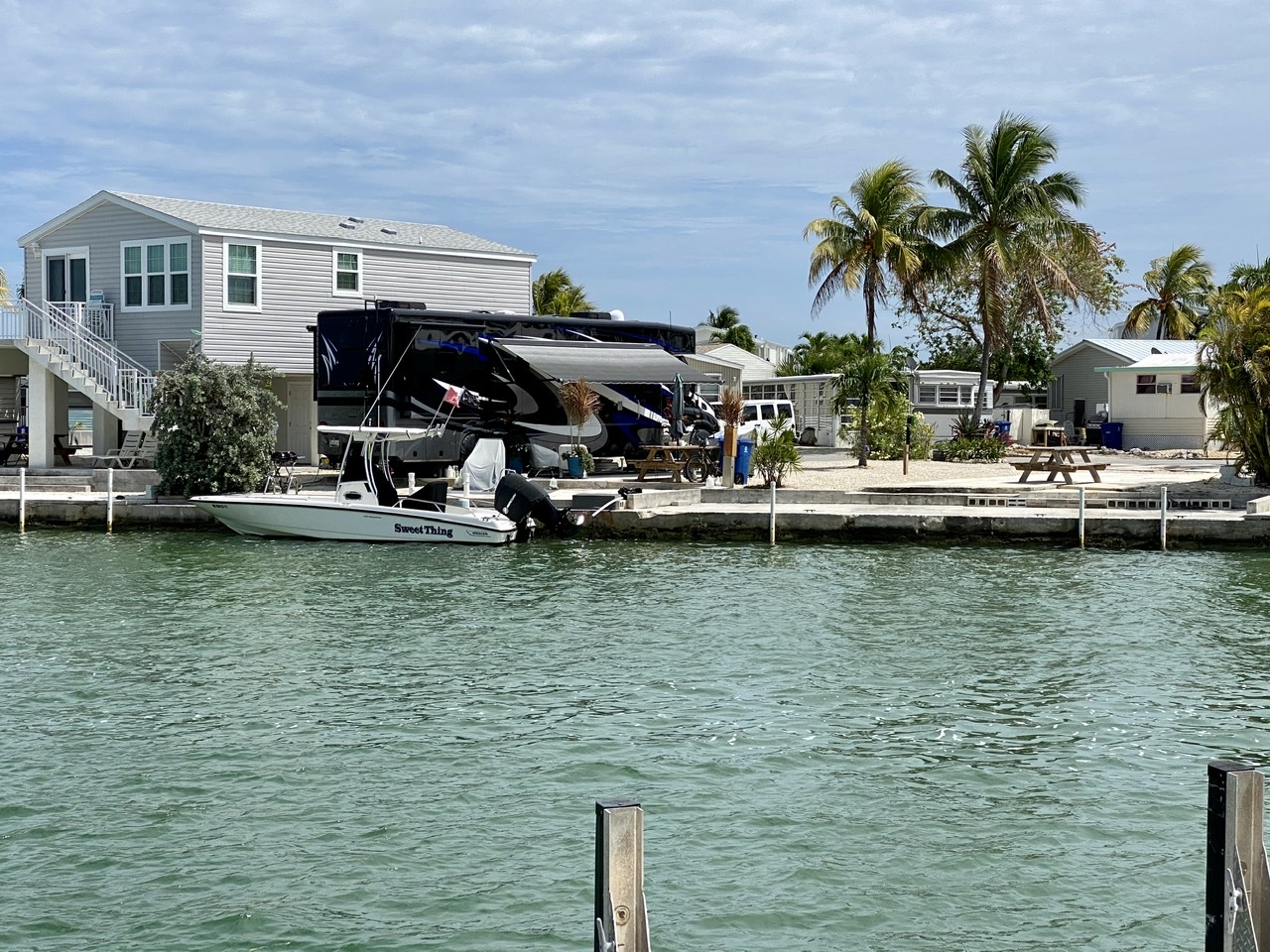It was a cool, wet morning so instead of looking for outdoor activities, we decided to visit the Mammoth Site of Hot Springs. This museum and paleontological site is an active excavation site and the world’s largest concentration of mammoth’s in the world. Three woolly mammoths and almost 60 Columbian mammoths have been identified at this site, In addition to the mammoths, camel, llama, giant short-faced bear, wolf, coyote, prairie dog, fish and molluskk shells have also been recovered from the now dry 26,000 year old sinkhole.
The tour was very interesting and I would recommend it if you enjoy learning about history or science. The tour leader was very helpful by letting me remain near her during the tour so I could hear. Everyone else gets earbuds but they would not help me. With my cochlear I don’t hear from my ear!
It is believed that the mammoths were trapped in this ancient sinkhold after they entered to eat, drink and bathe in the warm water. The slippery shale sides prevented their escape. All of the mammoths identified so far have been males. Since the males are pushed out of the herd at a young age to forage on their own, they were not with older mammoths that could teach them about the dangers of the sinkholes.
According to the History section of The Mammoth’s website: “In June 1974, heavy equipment operator George Hanson was leveling ground for a Hot Springs housing development planned by land owner Phil Anderson. Hanson was grading a small hill when his blade struck something that shone white in the sunlight. Hanson got out for a closer look. What he saw was a tusk, about seven feet long, sliced in half length wise, along with other bones. Mr. Anderson contacted three universities and colleges in South Dakota and one university in Nebraska, none of the 4 colleges were interested in the project nor did they have any desire to come and see what was discovered in Hot Springs.
Mr. Hanson then took some of the bones to his son Dan, who had taken classes in geology and archaeology. Dan Hanson realized these were no ordinary bones. He called his former college professor, Dr. Larry Agenbroad, who was on the faculty of Chadron State College in Chadron, Nebraska at the time, and asked him to come and take a look at the site. Dr. Agenbroad was in southeastern Arizona when Hanson called, excavating a site where mammoths had been hunted and killed.
The young Hanson kept a 24-hour vigil at the site until Dr. Agenbroad and his crew could arrive. Dr. Agenbroad’s first look at the number of bones exposed by the bulldozer told him there were at least four to six mammoths. He knew there had to be more.
Because of another commitment at the Hudson-Meng Bison kill site near Crawford, NE, Dr. Agenbroad asked his colleague Dr. Jim Mead (now Mammoth Site Chief Scientists and Site Director), and several members of his Arizona dig crew to spend 10 days salvaging and stabilizing the bones, tusks, teeth, and skull fragments that had been exposed. Land owner, Phil Anderson, offered to halt his housing project until they had a better handle on what was there. This short excavation proved significant, as an unprecedented number of specimens were uncovered.
The following year, in 1975, Dr. Agenbroad and Dr. Mead led a team of volunteer students to begin excavating the site. Interest in the mammoth graveyard grew rapidly after a complete skull with tusks intact was unearthed. They would dig in the summer months and rebury in the winter to preserve them.
By the end of the 1975 summer excavation, Phil Anderson realized his 14 acres of land would be more valuable as a resource for scientific study rather than a housing development. Soon thereafter, through community commitment and Mr. Anderson’s generosity, the Mammoth Site of Hot Springs, SD, Inc., a 501 (c)(3) Non-Profit Organization, was born.”
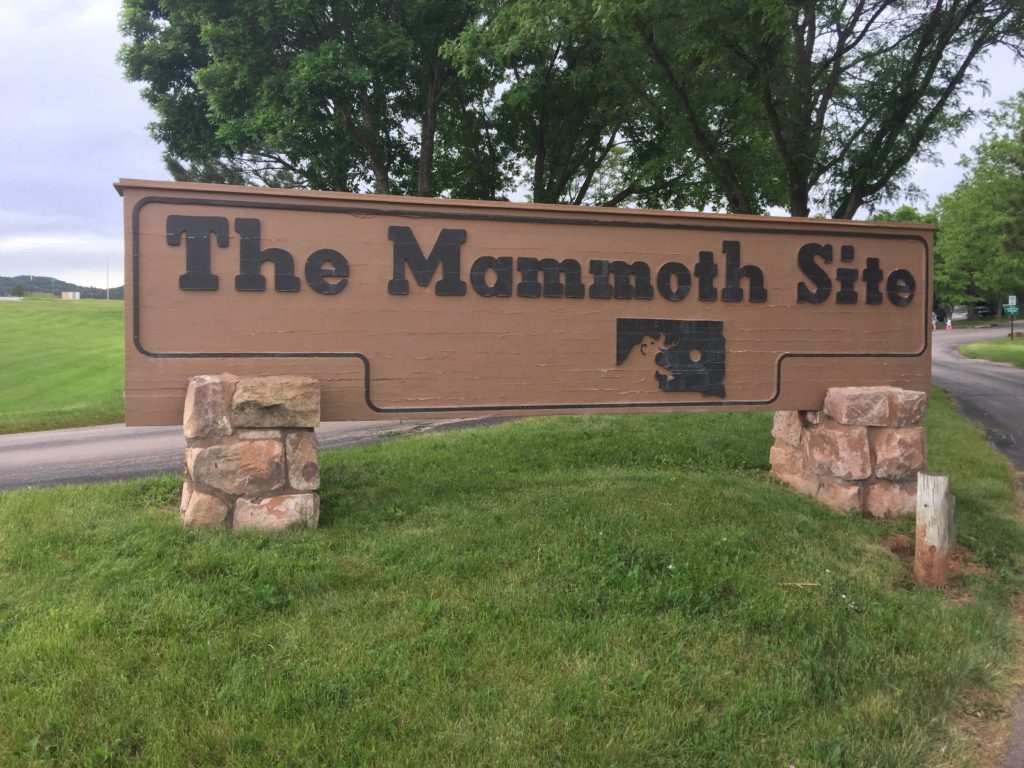
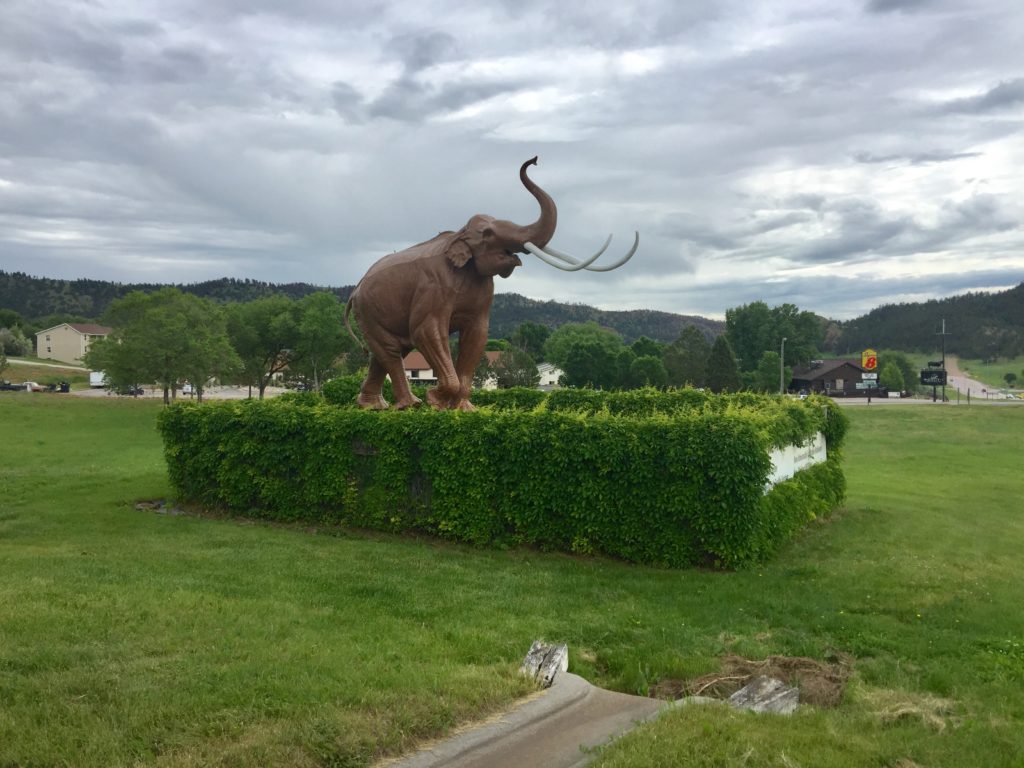
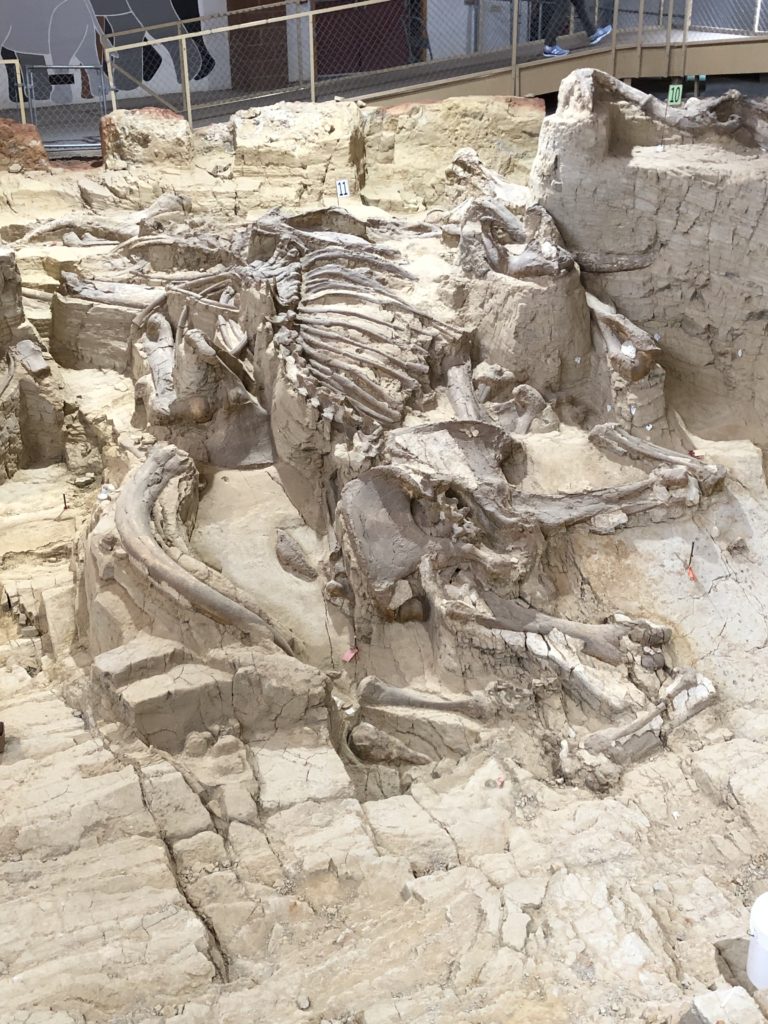
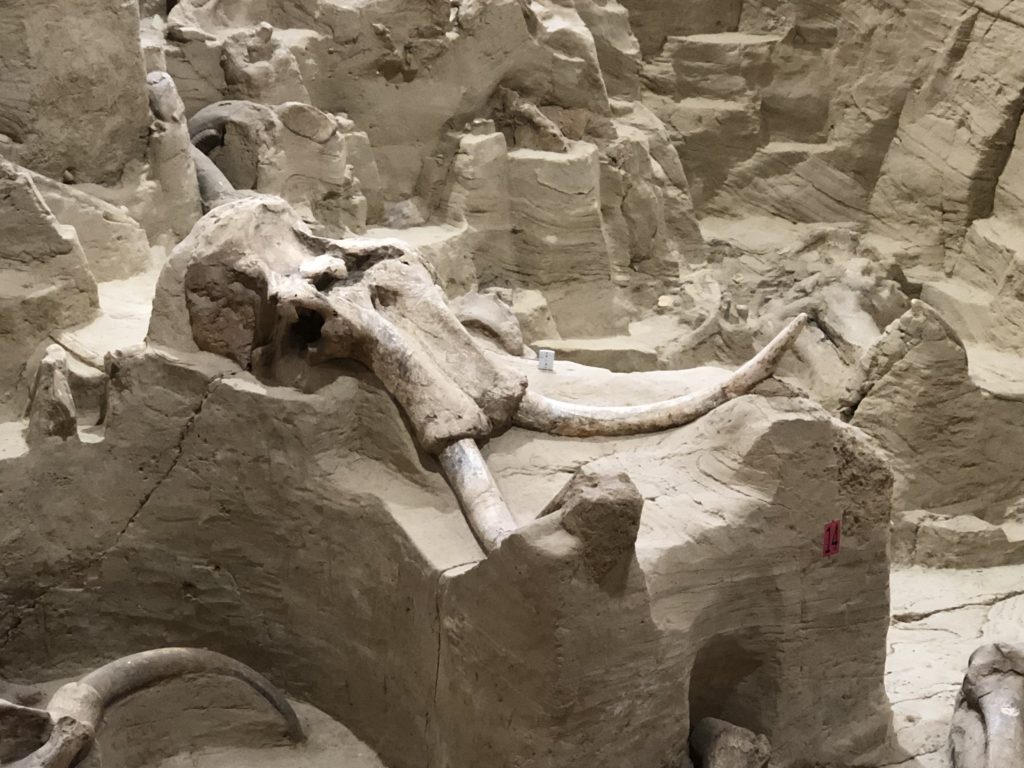
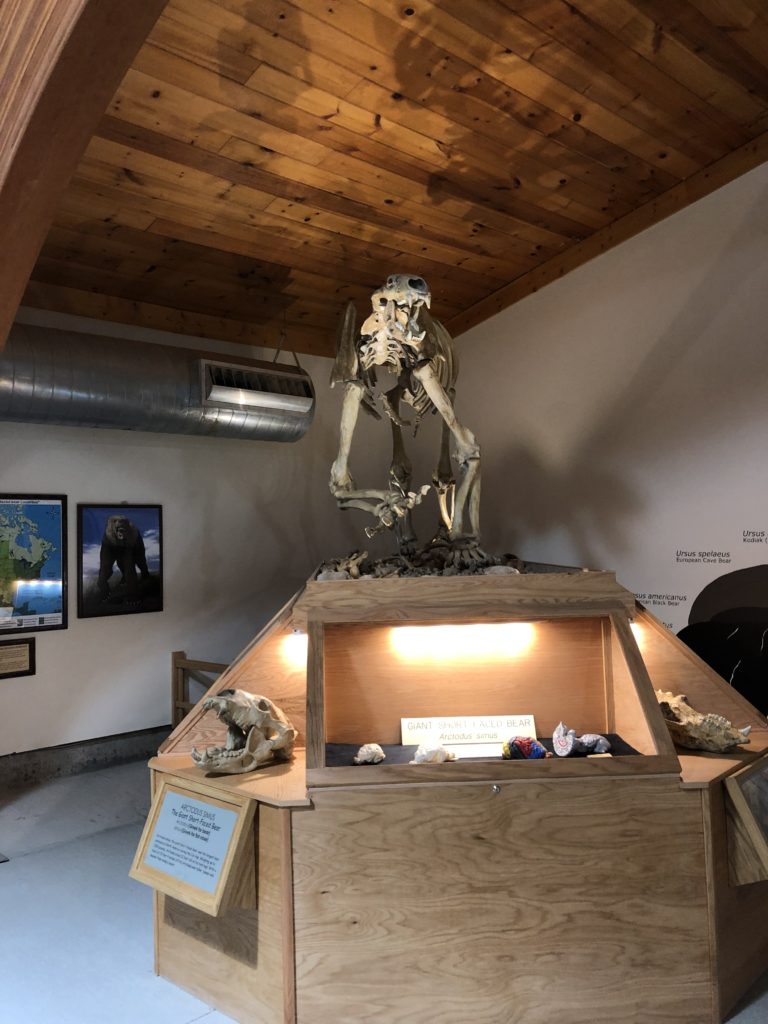
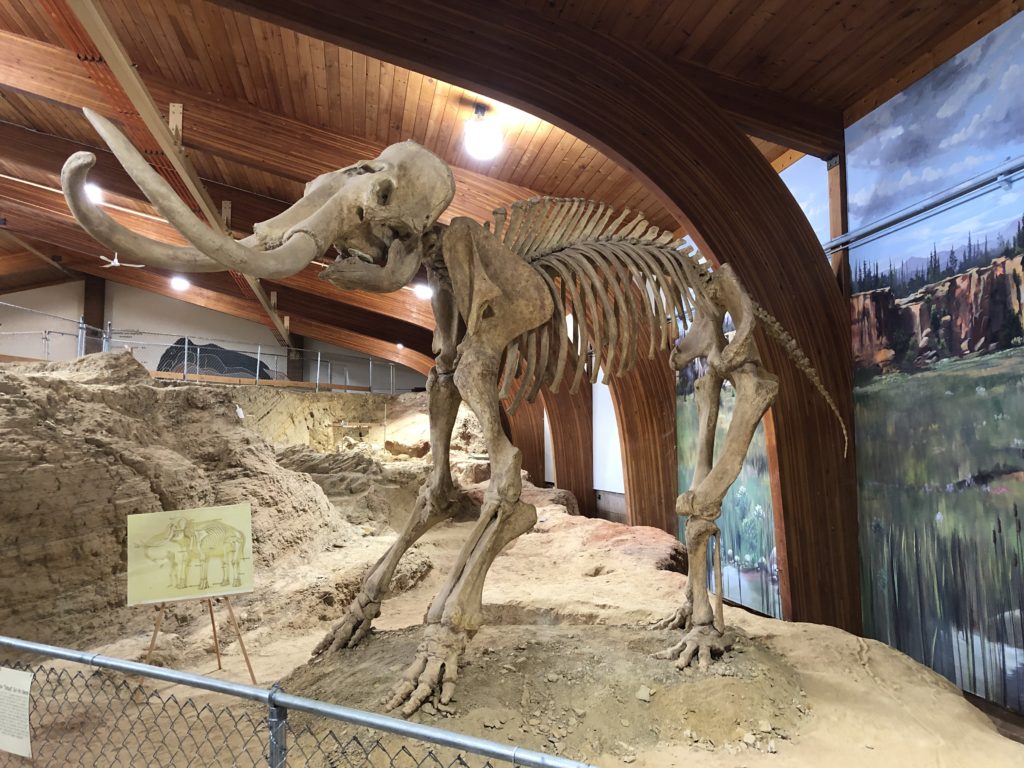
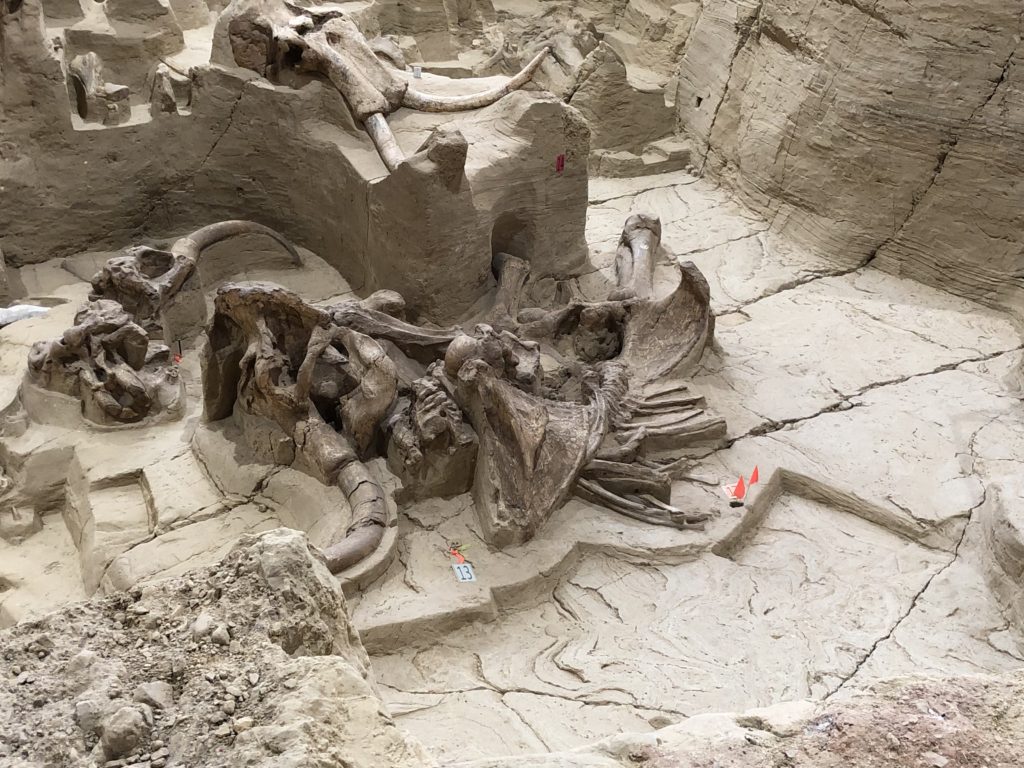
Most intact mammoth at the Site. The 2 small flags to the lower right of the picture mark the bore hole they dug to determine the depth of the sinkhole. The bore showed more fragments of bones up to 40’ deeper. This mammoth in the photo was more than 20+’ below the original finds
After leaving the mammoth museum, we spent some time exploring the Hot Springs countryside. We went to the Sheps Canyon Recreation Area, Cascade Falls and the Black Hills Wild Horse Sanctuary. We crossed the Cheyenne River right before we found the Wild Horse Sanctuary. We did not get to see any horses as you needed to make an appointment to get a tour of the sanctuary, but we enjoyed the spectacular views of the countryside.
